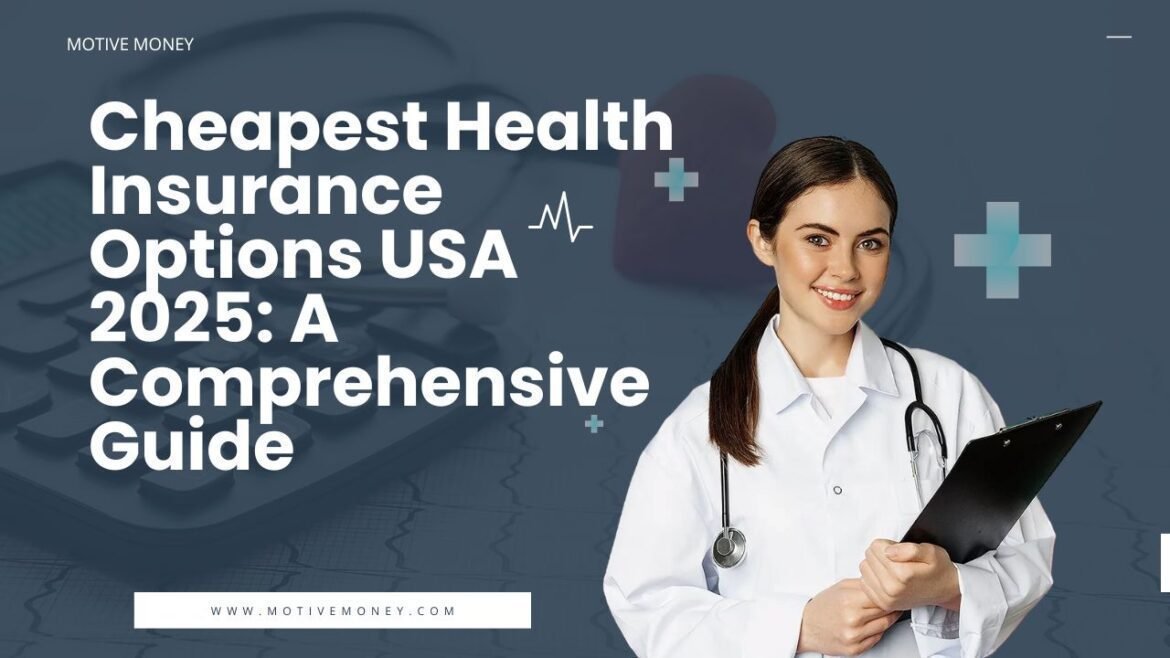Navigating the landscape of health insurance in the USA can feel like a complex maze, especially when your primary goal is to find affordable health insurance that doesn’t compromise on essential coverage. For individuals and families on a budget, securing the cheapest health insurance options in 2025 is not just about saving money; it’s about protecting your financial future from unexpected medical costs.
With rising healthcare expenses, knowing where to look and what to consider for affordable health insurance is more critical than ever. Whether you’re self-employed, looking for family coverage, or simply trying to reduce your premiums, there are strategies and programs designed to make healthcare accessible.
This comprehensive guide will demystify the process of finding the cheapest health insurance options in the USA in 2025. We’ll explore the major avenues for coverage, detail eligibility for various programs, highlight crucial cost-saving strategies, and help you make an informed decision to secure reliable, budget-friendly health insurance for yourself and your loved ones.
Understanding Health Insurance Costs in the USA
Several factors contribute to the cost of health insurance premiums, especially in the USA:
- Age: Older individuals generally pay more.
- Location: Premiums vary significantly by state and even county.
- Plan Type: HMOs, PPOs, EPOs, and POS plans have different structures and costs.
- Coverage Level: “Metal tiers” (Bronze, Silver, Gold, Platinum) indicate how much of your medical costs the plan pays vs. what you pay out-of-pocket (Bronze is typically cheapest premium, highest deductible).
- Smoking Status: Smokers often pay higher premiums.
- Family Size: Adding dependents increases costs.
Main Avenues for Finding Cheapest Health Insurance Options
- The Affordable Care Act (ACA) Marketplace:
- How it Works: Healthcare.gov (or state-run marketplaces) allows you to compare plans and enroll during open enrollment or special enrollment periods.
- Key Advantage: Subsidies: The biggest benefit for affordable health insurance here are the premium tax credits (subsidies) and cost-sharing reductions. These are based on your income and can significantly lower your monthly premiums and out-of-pocket costs. Many people qualify for $0 or very low premium plans.
- Eligibility: Based on your household income relative to the Federal Poverty Level (FPL).
- Pro Tip: Always apply for subsidies, even if you think you don’t qualify. Many people are surprised by how much assistance they can receive. Find official information and apply for coverage at Healthcare.gov.
- Medicaid:
- How it Works: A joint federal and state program that provides free or low-cost health insurance to low-income adults, children, pregnant women, and people with disabilities.
- Eligibility: Primarily based on income and family size. Eligibility rules vary by state, especially whether a state has expanded its Medicaid program under the ACA.
- Benefit: Offers comprehensive coverage with very low or no out-of-pocket costs.
- Employer-Sponsored Health Plans:
- How it Works: If you or a family member work for a company that offers health benefits, this is often one of the most affordable health insurance options. Employers typically subsidize a large portion of the premium.
- “Affordability” Test: An employer plan is considered “affordable” if the employee’s share of the premium for self-only coverage doesn’t exceed a certain percentage of their household income (e.g., 8.39% in 2024). If it exceeds this, you might qualify for marketplace subsidies.
- Benefit: Generally offers good value and a wide range of plans.
- Short-Term Health Insurance:
- How it Works: These plans offer temporary coverage, typically for 3 months to less than a year. They are usually much cheaper than ACA-compliant plans.
- Drawbacks: They do not have to comply with ACA rules, meaning they can deny coverage for pre-existing conditions, cap benefits, and don’t cover essential health benefits like maternity care or mental health. They are meant as a bridge between comprehensive plans.
- Use Case: Only for specific, temporary gaps in coverage when you are healthy and fully understand the limitations.
- Catastrophic Health Plans:
- How it Works: Available on the ACA marketplace for individuals under 30 or those with a hardship exemption. They have very low monthly premiums but very high deductibles (e.g., over $9,000).
- Use Case: Provides a safety net for major medical emergencies after you’ve paid a large sum out-of-pocket. Not for routine care.
Cost-Saving Strategies for Affordable Health Insurance
Beyond choosing the right avenue, consider these tips to reduce your costs:
- Choose a Higher Deductible Plan: If you’re generally healthy and have a strong emergency fund, a higher deductible plan (like a Bronze or Silver tier) will have lower monthly premiums. Ensure your emergency fund is robust for higher deductibles: Build Your Financial Fortress: The Essential Guide to Emergency Funds).
- Utilize HSAs (Health Savings Accounts): If you have a High-Deductible Health Plan (HDHP), you can contribute tax-deductible money to an HSA, which grows tax-free and can be withdrawn tax-free for qualified medical expenses. It’s a powerful triple-tax-advantaged savings vehicle.
- Bundle Policies: Some insurers offer discounts if you bundle health insurance with other policies like life insurance.
- Negotiate Medical Bills: Don’t be afraid to negotiate prices for medical services or bills after receiving care.
- Consider Telehealth: Many plans offer telehealth services, which can be a cheaper and more convenient alternative for minor ailments.
Conclusion: Prioritize Protection, Maximize Savings
Finding the cheapest health insurance options in USA 2025 is a critical component of sound financial planning. While the costs can be daunting, leveraging the ACA marketplace with its subsidies, exploring Medicaid if eligible, or utilizing employer-sponsored plans are your best bets for comprehensive yet affordable health insurance.
By understanding your options, comparing plans diligently, and adopting smart cost-saving strategies, you can secure the vital protection you need without straining your budget. Prioritize your health and your financial peace of mind by making an informed choice for your health insurance today.
Discover more from Motive Money
Subscribe to get the latest posts sent to your email.
